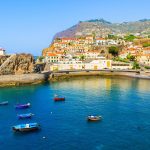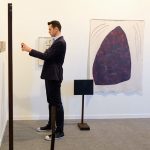How Portugal and Amorim transformed cork worldwide
Portugal has plenty of potential, but there aren’t many areas in which the country is the world leader. And it is exactly that status that makes Corticeira Amorim the only company to remain ahead of its international rivals by a substantial market quota.
Founded in 1870 in Vila Nova de Gaia by the grandfather of the country’s wealthiest man – Américo Amorim, who passed away last year –, Corticeira Amorim is the oldest cork company to never close its doors, the global leader in cork transformation and the largest cork exporter in the world, with 94% of sales made outside of Portugal in over 100 countries.
In April this year the company commemorated its 30th anniversary on the Lisbon stock market – the PSI-120. In the past three decades since, Amorim has seen its market value increase ten-fold to over €1.5Bn. This value corresponds to around 10 times more than in 1988. The following year Corticeira Amorim merged with Amorim & Irmãos, Champcork and Ipocork to form a single entity worth €165 million.
In 2017, company sales hit €701.6 million, a 9.4% increase on the previous year, responsible for 28% of the bottle sealing market on an international scale. Cork stoppers represent 67.3% of its turnover, but other business departments are gaining scale thanks to the multiple applications that are emerging for this product. From components for the aerospace and rail industries, to furniture, footwear and unique pieces such as the surfboard of prominent surfer Garrett McNamara, through to its contribution to iconic architectural projects, such as the flooring of the Sagrada Família cathedral in Barcelona, and the creation of absorbent products to tackle oil or solvent spills at high sea, the examples are multiplying, catapulting the company into a new era.
“From the 1960s, Corticeira Amorim began innovating. At that time, when it opened plants that allowed it to retain added value in Portugal, the company also launched a subsequent phase of strong growth –internationalisation – and the next phase, research and innovation, where we are now,” explains Carlos de Jesus, marketing director of the company, who stresses that €7.5 million is invested every year for research alone.
The effort has proven to be worthwhile. A look at the company’s diverse portfolio of products and the possible uses of cork shows that we are talking about a perfect – or almost perfect – raw product. It all starts with the cork oak forests, considered the basis of one of the 36 most important areas in the world in terms of biodiversity, alongside places like the Amazon, the African Savannah and Borneo. More than 200 animal species and 135 different types of plant find the ideal survival conditions in the oak forests, which also work as a barrier against fires, given the slow combustion of cork.
Despite its small size, Portugal has around 737,000 hectares of oak forests of a total of 2.2 million in the Western Mediterranean Basin, a region that provides the best conditions for the species in terms of soil composition, temperature, water and altitude. In other words, Portugal holds 34% of the total area, with Spain, the country’s main rival, holding 27%, followed by Morocco with 18%.
This is a forest area with the capacity to absorb up to 32 million tonnes of CO2 per year, an important contribution to reducing the greenhouse effect, the main cause of global warming, according to data from the Portuguese Higher Institute of Agronomy.
Profit without destruction
Cork is also a raw product that can be obtained without cutting down the tree, and fulfils the 3 Rs of sustainability to a T – it’s renewable, recyclable and reusable.
The cork oak tree lives on average 200 years, during which time it can be stripped between 15 and 18 times. The cork extraction process, called cork stripping, is highly specialised and does not damage the tree. In fact, it is the only species of oak tree whose bark regenerates after each extraction.
In the production process, cork requires low energy consumption, and from the consumer’s perspective, it is the only raw material that can guarantee the same performance during the entirety of the product’s lifespan.
“We resisted the temptation to call cork a perfect material, but we’re constantly being surprised by this extraordinarily complex cellular structure. It’s a material with unparalleled fibrotic capacity, with equally unique thermal and acoustic insulation, and all this from a tree that never has to be cut down,” underlines Carlos de Jesus.
But there’s more: the sector provides the best-paid agricultural labour in the world. “The cork oak can only be stripped after 25 years. Then, the second stripping can only be done nine years later, and it’s only after the third stripping – i.e. after another nine years – that the cork acquires a superior quality. So that is 43 years of growth of a tree. It is extremely important that the person stripping the cork knows exactly what they are doing, which is why they are paid so well,” explains the Amorim marketing director. He notes that, on average, an agricultural worker in the sector earns around €100 per day.
The cork industry helps to maintain thousands of jobs and keeps people close to the land, in areas susceptible to desertification. According to the World Wildlife Fund (WWF), more than 100,000 people in Southern Europe and North Africa depend on these forests, directly or indirectly. Applying the Lavoisier maxim, “nothing is lost, everything changes”, cork has multiple uses, from start to finish of the entire process. Corticeira Amorim meets more than 60% of its energy needs using biomass (cork dust), which is a neutral source of energy in terms of CO2 emissions.
VIP clients
With 78 companies spread across the world (10 industrial plants for raw materials, 21 plants of cork solutions and 7 distribution companies), Corticeira Amorim currently distributes its activity across five business areas: raw material (1.6% of its sales), cork stoppers (67.3%), floor and wall coverings (16.8%), composite cork (12.9%) and insulation (1.4%).
According to 2017 figures, companies based in EU countries are among its main clients, representing 56.8% of revenue, while the US represents 18.5% and Portugal 5.7% of its overall turnover.
“Germany, France, Italy and Spain are very important countries for us. Individually, the US is the main market for cork. France is the second. But if we look at economic blocks, the EU is without a doubt the market that carries the most weight,” notes the Amorim representative. Microsoft, Airbus, Siemens, NASA, Chrysler, Pernod-Ricard and the Francis Ford Coppola Winery are some of the company’s most prominent clients. “Above all, we can reach the world’s most demanding organisations with a product that is natural and national,” emphasises Carlos de Jesus.
Such is the case of the aerospace industry. Corticeira Amorim has been a supplier of cork solutions for this industry since the beginning of space exploration with Apollo 11, thanks to its thermal insulation properties that allow it to withstand temperatures of up to 2000ºC. In its report, NASA highlighted that “cork is nature’s foam, with a unique combination of properties”.
In another field – the rail industry – is the Siemens project for Warsaw’s underground carriages, which comprises a cork-based floor and resulted in a significant optimisation of around 30% when compared to the traditional models.
Over 40 patents
But the examples go on, in very different areas. The floor and wall covering business unit has grown significantly in recent years, whether it’s in residential spaces, hotels, libraries or museums, among others.
One of the most famous partnerships in architectural terms took place in Barcelona. Respecting Antoni Gaudí’s philosophy that “nature is my master”, the architect Jordi Bonet i Armengol chose the product to cover the floor of the Sagrada Família, a World Heritage Site and one of the most visited monuments in the world. To fulfil the need for acoustic insulation, durability and resilience, 2000sqm of natural-looking cork flooring was placed in the cathedral, in harmony with Gaudí’s philosophy.
More recently, another iconic project, this time on Portuguese soil, is also drawing attention. The gateway to Lisbon for tourists arriving by boat, the new Lisbon Cruise Terminal, designed by the architect Carrilho da Graça, brought together Amorim Cork Composites, Secil and the University of Coimbra. Together, they created a fitting solution: they developed a new type of light white concrete with cork aggregates, applied to the building’s façade. The created composite allowed a 40% reduction of the weight in the building’s structure, without forgetting its resistance and the improved comfort and energy efficiency, given cork’s thermal capacity.
The versatility of this material means it can really be adapted to anything, in all fields. Another variant, for example, are the solutions in the footwear industry that go beyond simple insoles, with cork being incorporated in orthopaedic and podiatry products, as cork is proven to reduce and prevent orthopaedic conditions. Or the fact cork is used as a natural grass substrate on football pitches, reducing the impact of a fall by around 40% and which tests its elastic memory. Thanks to these qualities, and requiring less irrigation, it was a huge success in four stadia of the Euro 2016 football championship, among which were those in Lyon and Toulouse.
In different products, with different applications, cork has proven to be up to the challenge, with more than 40 patents submitted. “I would say that we are going through a rebirth period of cork, not only in economic terms, but also in understanding its benefits, by showing the world that it is possible to have a balance between economic, environmental and social considerations,” concludes Carlos de Jesus. “It isn’t easy, but it’s not a utopia.”










